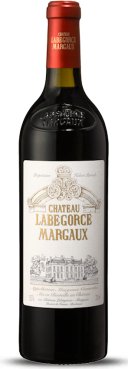Any price
Chateau Pedesclaux 5me cru classe
Abreu Madrona Ranch Cabernet Sauvignon
ABREU Madrona Ranch Cabernet Sauvignon, Napa Valley
Screaming Eagle Cabernet Sauvignon
Dalla Valle Vineyards Maya Cabernet Sauvignon & Cabernet Franc
When it comes to points, this prestigious Napa Valley blend of Cabernet Sauvignon and Cabernet Franc is a centurion many times over. It’s the crown jewel in Dalla Valle’s shimmering portfolio, with quality and grace of an almost unrivalled pedigree. But that’s not even the best part. Maya’s Vineyard was planted to celebrate the birth of Gustav and Naoko Dalla Valle’s daughter in 1986. As fate would have it, Maya grew up to become one of America’s most promising young winemakers, continuing the remarkable legacy of her parent’s winery.
Chateau Kirwan 3me cru classe
Chateau Labegorce Cru bourgeois
Labegorce is found just north of the town of Margaux, opposite Chateau Lascombes. It produces wines that are often favourably compared to its neighbouring classified Margaux Growths, but available for considerably less of an investment. Its instantly recognisable and iconic chateau was constructed in 1821, and the modern estate was purchased by Hubert Perrodo in 1989, now managed by his daughter Nathalie. The wine is typically made up of at least 50% Cabernet Sauvignon, followed by slightly less Merlot and a small balance of Cabernet Franc and Petit Verdot. Soils here are primarily sandy gravel with small amounts of limestone.
Chateau Haut-Bailly Grand cru classe
While the estate known as Chateau Haut-Bailly dates back to 1461, its wine production began in 1530, falling into the hands of the de Leuvarde and Le Bailly families in 1630. It was purchased in 1998 by Robert G Wilmers, a Harvard-educated banker, and his French wife Elisabeth and under their care, the estate has begun producing some of the best wines in its history. The cellars and production procedures were renovated and modernised and this year, the Chateau itself was awarded government recognition of its cultural and vinious heritage. From some of the oldest vines in the region, the 2016 has been lauded as one of the Chateaus best, with Neal Martin hailing it as perhaps the best that I have tasted in almost 20 years of tasting at this estate.
CHATEAU LA TOUR CARNET 4me cru classe
Chateau Beychevelle 4me cru classe
Beychevelle is often described as the Versailles of Bordeaux, due to its spectacular château and gardens. Beychevelles origins go back to the mid-1400s and the estate was renovated and rebuilt in the second half of the 18th Century. It is now owned (since 2011) by the Japanese Suntory company in partnership with Pierre Castel, head of Castel Freres. The 75ha of St-Julien vineyards are planted on deep, gravelly soils 62% Cabernet Sauvignon, 31% Merlot, 5% Cabernet Franc and 2% Petit Verdot and increasingly farmed organically. A striking new glass-walled winery was completed in 2016. Chateau Beychevelle, classified Quatrième Cru (Fourth Growth), is a traditionally-styled Bordeaux wine full of cassis, earth, spice and tobacco notes that ages well.
Chateau Brane-Cantenac 2me cru classe
Having been through many iterations since its establishment in the early 17th century, what we know today as Chateau Brane Cantenac has well and truly settled into itself and become something extraordinary. Taking its name from the man knows as the Napoleon of the Vineyards, the Baron of Brane, who purchased it in 1833, the chateau has passed through several hands, finally coming to rest in the hands of Lucien Lurton in 1956. Under the Lurton family large portions of the vineyard were replanted, vine densities increased, drainage systems improved and the plantings evolved into their current varietals. The 2016 release has garnered a huge response from critics, with James Suckling naming it one of the best ever from the chateau, and Jancis Robinson praising its Cool, unforced and sophisticated delivery as Very competent indeed.










